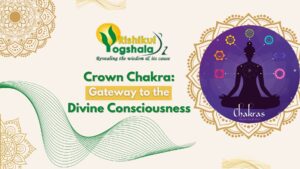What is Yama Yoga?
In Yoga Sutras 2.29, Sage Patanjali has described yoga with eight limbs (Ashtanga Yoga), of which yama is the first and most important step. Its literary meaning is “bridle” or “rein.” In brief, yama in yoga can be explained as a practice dealing with restraints, moral values, and disciplines. The yamas are a foundation for honest and value-based human living. It promotes spirituality, self-control, and positive interactions.
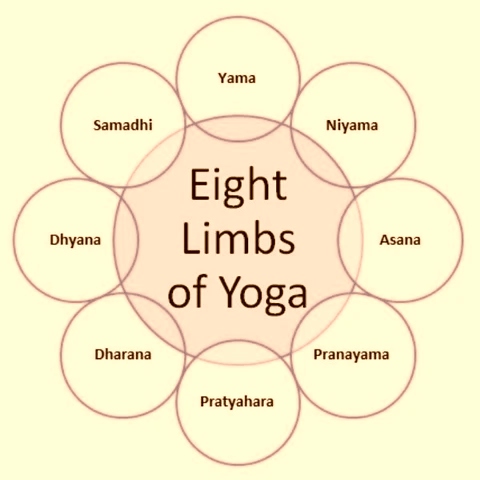
Yama Yoga: A Brief History
The yamas can be traced back to their mention in the oldest scripture in the world—the Rigveda. In Hinduism, more than 56 texts speak about the concept of yamas. Sage Patanjali gave a description of yama in which we put some limitations on ourselves to stay concentrated on our efforts to reach our prime goal in life. It is similar to how a horse rider controls the rein of his horse to direct him in his favourite direction. Thus, it shows that a positive limitation can turn out to be a boon in life as it helps to fulfil our sense of self-discipline for accomplishing our life’s purpose.
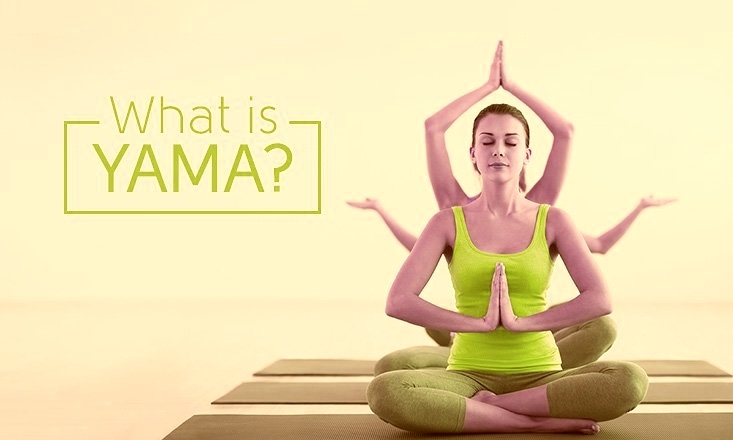
Types of Yamas
There are five types of yamas:
- Ahimsa (non-violence): The ahimsa limb of yama views the living beings and environment as vital for sustainable growth, for which all forms of damage to them must be prevented.
- Satya (truth): Satya relates to honesty, an important virtue cultivated through yama yoga.
- Asteya (non-stealing): Fair acquisition of things is an aspect of Asteya fully supported under the pillar of the first limb of yoga called yama.
- Aparigraha (non-possessiveness): Fairness in work and life wins people around you. Aparigraha weaves the same spirit within yama yoga.
- Brahmacharya (celibacy): The correct use of energy is important for the practice of Brahmacharya, which creates a balance in life.
There are other yamas, too, which have been elaborated on in different texts. These mainly include:
- Ksama (forgiveness)
- Daya (compassion)
- Arjava (sincerity)
- Dhrti (perseverance)
- Mitahara (measured diet)
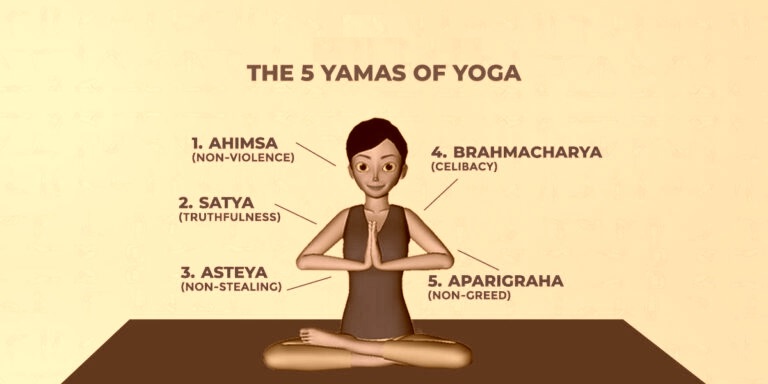
Yamas: Examples from life
1. Non-Violence (Ahimsa)
Slogan: “Ahimsa Paramo Dharma!”
The literal meaning of Ahimsa is “inability to hurt or kill living beings.” It clearly focuses on the fact that violence in all its forms must be eliminated from our thoughts, actions, words, and feelings. It closely follows the principle of compassion and kindness towards living beings.
Example from life
You may have heard about wars erupting all across the world. What do such scenarios lead to? Nothing but painful, unforgettable experiences for both body and mind. Wars are a form of violence that initiates forceful harm to the body. It is here that the topic of Ahimsa becomes extremely important. Non-violence is a greater force that has the power to restore peace in the mind and body. With non-violence comes awareness about true existence, which is the ultimate purpose of yama in yoga.
2. Truth (Satya)
Slogan: “Satyameva Jayate!”
In Sanskrit, the word truth or truthfulness means “Satya.” It is undoubtedly the highest virtue among all other virtues. It brings about truthfulness in our thoughts, emotions, actions, and karma (deeds). Honesty is considered a treasure for oneself and for others as well. Seeking the path of truth is next to godliness.
Example from life
When a person practicing yoga in a yoga class is unable to bend backward because of stiffness in his body, he may puff out the chest part to fake the posture. It is something false. He must realize the power of truth and actual practice to achieve the outcomes of yoga. Truthfulness must flow through the entire pose and not just flatter some parts. The worth of the pose lies in the truth that it is being done.
3. Non-Stealing (Asteya)
Slogan: “Spin the wheel of integrity and honesty with every move of yours!”
The yama yoga definition declares Asteya, the yama of non-stealing, as one of the finest values to bring into reality. The idea of stealing comes from the belief that there is not enough for our needs. So, if we want to satiate our needs, we must extract them through dishonest means like stealing. But it is altogether a misconception, for it generates the law of a lacking universe that is unable to provide for everyone. The seed of incompleteness is what grows in our minds. Asetya is the mighty sword to tear apart this inner belief of incompleteness or scarcity.
Example from life
The person performing a yoga pose may not invest 100% in that particular pose, as he may think there won’t be enough energy to do the next pose. However, this is a bad idea. Each pose in yoga gives inner strength and energy to carry out itself. If you steal your energy because of the idea of scarcity, there will always be incompleteness in your yogic postures, and positive outcomes will never be followed.
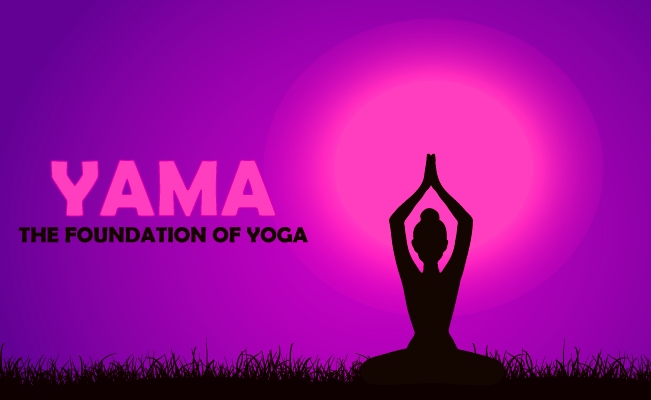
4. Non-indulgence (Brahmacharya)
Slogan: “Cultivate purity, conquer desires, embrace Brahmacharya.”
It is important to learn that overindulgence in the pleasures of life can turn your human senses blind. This Yama in yoga, meaning, states that true happiness in moderation is the key to success and fulfillment. As mentioned in the Vedas, Brahmacharya is the first ashram of a person’s life. It is supported by the sole role of focusing on the path of Brahman, which brings about a sense of organisation in the senses. Dharma is given priority over sexual desires or worldly pleasures. In the practice of yoga, sexual activity is seen as a way to create new life on earth. This energy of creation must be used wisely and not wasted in improper sexual conduct.
Example from life
Pupils can be taught to use minimum but focused concentration in class to achieve massive results. Suitable muscles in the body must be aligned for doing the respective work. The inner power and channels of force must be rejuvenated through yoga to enliven the spirits in their bodies. The child’s pose, or Balasana, helps to relax and renew the parasympathetic nervous system. The pupils must be asked to come onto their knees with the toes touching and the belly relaxing on the thighs.
5. Non-Collection (Aparigraha)
Slogan: “Embrace simplicity and let go of excess.”
This yoga includes the motto of being less possessive about worldly people and things. By doing so, we can get close to the true meaning of Godly truth. While Asteya perceives a lack of abundance as the reason for stealing, Aparigraha sees jealousy as the cause of greed. Thinking of someone better than you is the immediate reason for jealousy with complete ignorance of your worth. This yama meaning in yoga is the wisdom that shatters the strong liking to be someone else or possess things in someone else’s custody.
Example from life
A lot of people practicing yoga in a room must be taught to focus on their own asanas. If they start looking at each other, they may feel competition in the air. They may start to look at imperfection in their asanas and perfection in others. It defeats the purpose of the yoga art. They must take their gaze inward, helping them to improve their own postures and inner capacity.
Practice Yamas in Life and Yoga
It is best to practice the real yama in yoga, meaning in everyday life, through the power of actions, words, and thoughts. This helps to achieve universal peace and consciousness. Take a step followed by another while choosing yamas and practising them, and you may feel a remarkable difference.
Ahimsa
Tips to Practice in Life
- Don’t harm others or yourself physically. It is achievable through preventing peer pressure to get involved in harmful activities and ego management.
- Preventing food and drinks that could harm the body.
- Make three principles the center of your life—acceptance, kindness, and the ability to forgive.
- Don’t harm small animals who may cross your way or live in your abode. Instead, shift them to a safer place or prevent their entry into your home. It is better than killing them.
- Control the existence of negative thoughts and emotions in your mind.
Yoga Tip: Sukhasana or Vajrasana is the seated pose ideal for meditation and grounding.
Also Read – Sukhasana (Easy Pose) – Steps, Breathing, Meditation
Satya
Tips to Practice in Life
- Accept your truth and the truth of the people around you.
- Approve that your perspective may be influenced by more profound feelings of emotions and expectations within you. The senses and mind may also pose limitations on your perceptions. Accept this, too.
- Think and look apart from the existing perspectives to find the actual truth. For instance, “My friend has not kept her promise to text me today” is true. But the reason for this, which I create in my mind, could be—maybe she is not interested in talking with me, she is ignoring me, or she is arrogant—these are not real perceptions.
- Stand up for the truth and what you think is right, as long as it is safe to do so.
- Be liberal with your expression of truth and justice. Add accuracy and clarity to it.
- Seek more information in the lack of clarity from others.
Yoga tip: Vrksasana done on one foot while lifting the other foot and keeping it on the inner side of the standing foot is the best yoga posture for maintaining balance and finding the center of life. This encourages honesty about the strengths and weaknesses of the human body.

Asteya
Tips to Practice in Life
- Do the best you can at your workplace and help others in their difficulties.
- Keep your promises and don’t break them for any reason until it’s some emergency.
- Be kind and supportive to people around you.
- Keep bargains and deals fair without having a greed for a better deal for yourself.
- Practice generosity and give the best to others, whether it is a present or simply a smile.
Yoga tip: Nadi Shodhana, in which breathing occurs through an alternate nostril, helps to build inner contentment and balance.
Also Read – Nadi Shodhana: Meaning, Benefits, and the Process for Achieving Balance
Brahmacharya
Tips to Practice in Life
- Avoid addiction to substances or activities at all costs to live a better life.
- Prioritizing health over just eating food for greed and pleasure can keep you disease-free and physically, emotionally, and mentally strong.
- Carefully choosing sources of entertainment in day-to-day life can decrease the number of distractions you face in your life. Be wise while selecting movies, books, and games, for they preserve your energy or drain it.
- Keep more focus on needs rather than wants for an active and happy lifestyle.
- Moderate health-giving activities such as walking and massaging to achieve the best benefits for your health.
Yoga Tip: Anjaneyasana is performed in a standing position with one foot forward, bending the knee in front and lightly lifting the back knee. It is good for the lower body.
Aparigraha
Tips to Practice in Life
- Asking yourself about the need for a commodity you see in the market is an important precaution for practicing the non-collection of unwanted items. Question yourself firmly, “Do I need this pair of shoes?” “Do I need to spend on unwanted food items that seem unhealthy?”
- Healthier and stronger relationships with people can be built by reducing the level of possessiveness you have for a certain person. Respect their boundaries.
- Don’t attach yourself emotionally to possessions you think you value the most. This will automatically decrease the greed for more possessions in life.
- Respect your possessions and those of others. Take care of them like they are important and valuable.
Yoga Tip: Parsvakonasana is the asana in which the hips and sides of the body are opened to maintain a sense of releasing the inner burden of greed.
Also Read – Utthita Parsvakonasana: Benefits, Variations & Common Mistakes
Final Thoughts
The 5 yamas of yoga—non-violence, truth, non-stealing, non-indulgence, and non-collection—can take us on the road to peace, prosperity, and inner strength. They free us from inner and worldly limitations and provide wholesomeness to the concept of yoga. Ultimately, this wholesomeness is transferred to our inner selves and becomes part and parcel of our DNA. By continuously imbibing these yamas of yoga, we can rise to the level of true connection with the almighty one. It will be a moment of everlasting change for the yogi!




